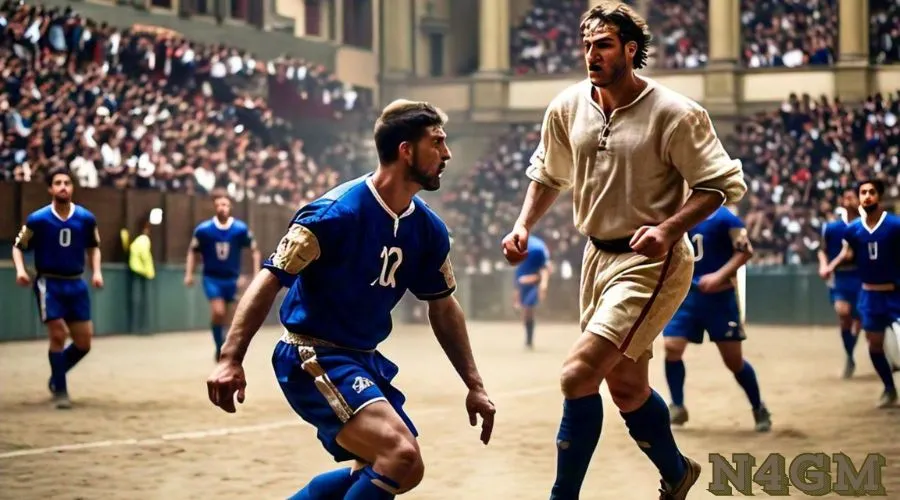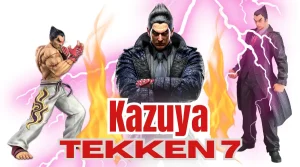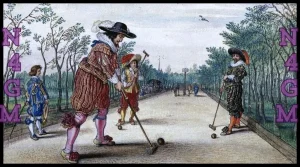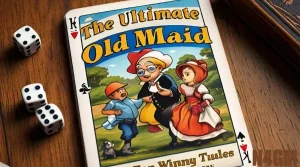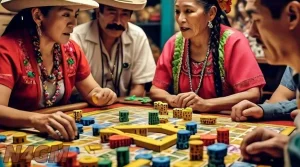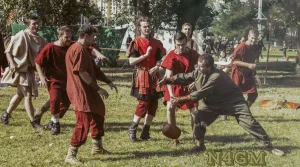The city of Florence, known for its art and legacy, actually hides a curious secret — an intense and historically significant game. Calcio Storico Fiorentino is one of the oldest sports in human history.
It combines soccer, rugby, and wrestling with a rough edge. This championship, held in the heart of Florence, transcends the concept of a sport. It represents a heritage, a celebration of Florence’s past, and a test of courage.
What Is Calcio Storico Fiorentino?
Calcio Storico, known as historic football, was started in Florence in 16th-century Italy. Unlike soccer, it is more violent, and there aren’t many rules to follow. Twelve teams of 27 players confront each other and struggle to put the ball into the opponent team’s scoreline.
Nearly any part of the body is allowed to protect oneself, which means it is allowed to use hands, feet, and any other part of the body. It is played like soccer, is as tough as rugby, and includes hand fighting like wrestling.
History Of Calcio Fiorentino
Calcio Storico has deep historical roots, tracing its origins back to ancient Rome. Historians believe it evolved from Harpastum. It was a rough ball game that Roman soldiers played to stay fit and ready for battle.
Over time, the game made its way to Florence and became a symbol of strength, strategy, and pride. By the 16th century, it had become a beloved Florentine tradition, played by nobles and even Popes.
The sport’s significance was so great that it was often part of major celebrations. One of the most famous matches took place in 1530, during the siege of Florence by Emperor Charles V.
Despite being under attack, the Florentines played Calcio to defy their attackers. It showed their courage and resilience. This moment showed the city’s and its people’s unbreakable spirit. Today, Calcio Storico is a strong link to their rich history.
Rules And Gameplay
1. Teams And Players
Calcio Storico features four teams, each representing a different neighborhood of Florence:
- Azzurri (Blues): Santa Croce
- Bianchi (Whites): Santo Spirito
- Rossi (Reds): Santa Maria Novella
- Verdi (Greens): San Giovanni
Each team consists of 27 players, known ascalcianti. These players are not identified by numbers but by symbols representing their neighborhood, such as lions, pears, keys, horns, stars, and dragons.
2. Basic Rules
- Game Duration: The match lasts for 50 minutes. The clock runs continuously, adding to the intensity of the game.
- Objective: The primary objective is to score goals by getting the ball into the opposing team’s net. A goal is called acaccia. If a player misses the scoring area, the opposing team gets half a point, called asmezza caccia.
3. Gameplay Mechanics
- Field Setup: The game is played on a large, sandy, rectangular field, typically in Piazza Santa Croce.
- Starting the Game: A referee starts the game by throwing a ball into the air after a cannon shot.
- Physical Contact: Players can use both their hands and feet to play. Physical contact is not only allowed but encouraged. Players often engage in wrestling and boxing to gain control of the ball.
- Strategies:
- Teams employ various strategies involving both offensive and defensive maneuvers.
- The front-line players engage in physical confrontations to clear paths for ball carriers.
- Ball carriers must dash towards the goal while avoiding tackles from opponents.
- Rules on Violence: The game includes physicality. For safety, some rules limit it.
- Hitting from behind is prohibited.
- Ganging up on a single player is not allowed.
- Referee’s Discretion: The referee decides what acceptable behavior in gameplay is. This can lead to different interpretations of the rules during matches.
4. Challenges And Controversies
Despite its popularity, Calcio Storico faces criticism due to its violent nature. Some argue that its physicality can lead to severe injuries. Though there are no fatalities, many players have been injured. Supporters say that this violence is part of what makes Calcio Storico unique and thrilling.
Role of Tradition In This Ancient Game
Calcio Storico is not a sport that is played for competition; it has its origin in tradition. Players pride themselves on representing a specific neighborhood. It is considered a part of history and something that will help to remember the history of the city and the people who created it.
The year-end culminating event is held on June 24, the day of St. John the Baptist, the calendar’s titular holiday of the Italian city of Florence.
The teams do not warm up, before the match there is a big procession through the city of Florence. Some carry banners and flags and all are in full renaissance regalia. Add to this, the drummers, trumpeters, and other dignitaries that precede the actual funeral procession.
These pomp and colors add pride and tradition to the event, making it more than just a game. Just see it as a celebration of Florence and what makes Florence unique.
The Revival Of Calcio Storico
Calcio Storico returned in 1930 after a long absence. Florence decided to revive this old tradition as a way to honor its past.
Since then, the game has risen in popularity, attracting players from all around the world. Every summer, visitors flock to Piazza Santa Croce. They want to witness strong rivalry and a piece of Florence’s heritage.
Different From Modern Sports
Unlike modern sports, Calcio Storico is raw and authentic. It is uncontrolled and uncommercialized. There are no major sponsorships, ad campaigns, or million-dollar contracts.
It’s a game created and played by the people themselves. Players are not compensated for their participation. They do it for pride, tradition, and their communities.
It also offers a sense of community, which is sometimes lacking in contemporary sports. The entire city gets involved. They watch from the bleachers or applaud from their windows. It reminds us of a period when athletics were more than simply entertainment; they were a way of life.
The Ghost Of Piazza Santa Croce
There’s a local legend that adds to the mystique of Calcio Storico. During a 17th century match, a Santa Croce player died on the field. His ghost is rumored to haunt Piazza Santa Croce.
On the night before the final match each year, some claim to see a shadowy figure walking across the field. Locals believe it’s the spirit of a fallen player. He is still loyal to his team and watches over the sport he loved.
The Future Of The Game Of Calcio Storico
With the growing interest from tourists, Calcio Storico continues to evolve. They have worked hard to preserve the tradition. They want to make the event more accessible. Some worry that more tourism might dilute the game’s authenticity.
Some locals fear that the commercial aspects of tourism may overshadow the essence of Calcio Storico. Despite these concerns, the game remains deeply rooted in the culture of Florence. As long as the people of Florence continue to embrace their heritage, Calcio Storico will live on.
Conclusion
This game is more than just an ancient sport; it’s a living piece of history. From its violent 16th-century origins, it is a grand spectacle today. It represents their strength, pride, and tradition. Whether you’re a sports fan or a history lover, a Calcio match is unforgettable. It connects you to the city’s soul.

